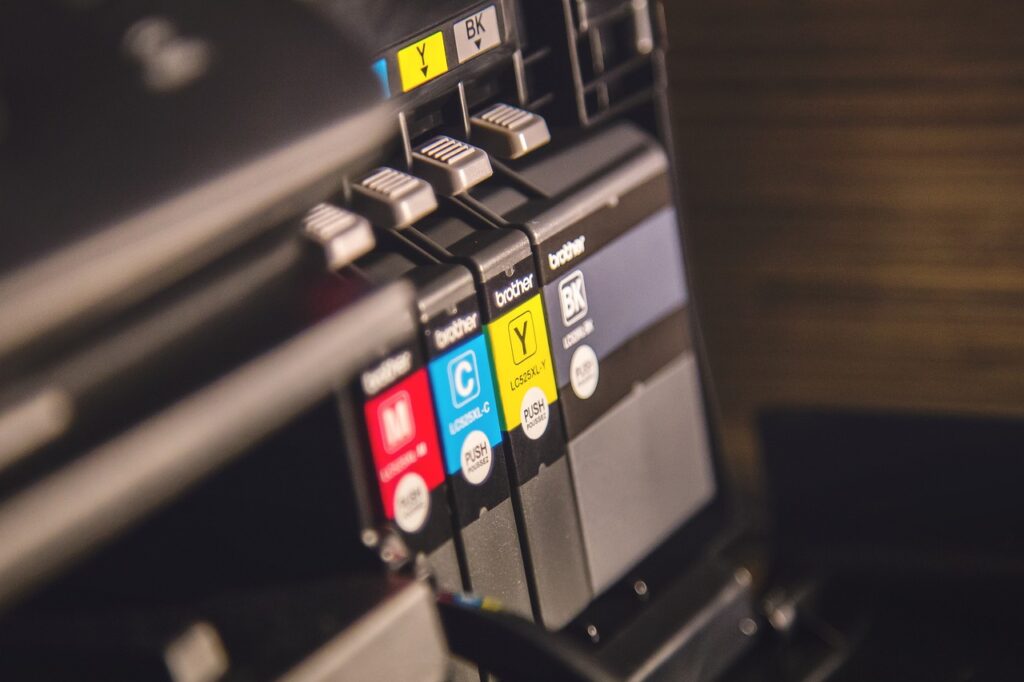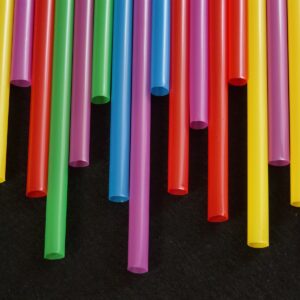Are you staring at a pile of empty ink cartridges and wondering if there’s something more useful to do with them than tossing them in the bin? You’re not alone. Many people are looking for ways to reduce waste and make their daily routines more eco-friendly.
Yes, many empty ink cartridges can be refilled, recycled, or returned to the manufacturer, reducing waste and sometimes saving money.
Did you know that refilling your printer’s ink cartridge can save you half of what it would cost to buy a new one? That’s good news for both your wallet and the planet!
In this blog post, we’ll guide you through the ins and outs of reusing your old ink cartridges. We’ll dive into how to properly refill or recycle them, making sure they continue serving a purpose without harming the environment.
This approach not only conserves resources but also cuts down on waste, offering a double win for sustainability-minded folks like yourselves. Get ready; it’s time to give those empty cartridges a second life!

Key Takeaways
- You can save money and the environment by refilling empty ink cartridges instead of buying new ones.
- Always use high – quality ink and check if your cartridge is suitable for reuse to protect your printer.
- Recycle cartridges properly through programs or services instead of throwing them away, reducing waste in landfills.
- Reusing cartridges helps conserve natural resources and reduces greenhouse gas emissions from producing new ones.
- Remanufactured ink cartridges are an eco-friendly choice, saving gallons of oil and cutting down on plastic waste.
Can Empty Ink Cartridges Be Reused?
Empty ink cartridges can be reused, but there are certain factors to consider and do’s and don’ts to keep in mind. Let’s delve into the details of how you can effectively reuse empty ink cartridges for a sustainable printing future.
Factors to Consider
Before reusing ink cartridges, know the type and condition of your cartridge. Quality matters when picking refill ink to prevent printer damage.
- Check compatibility: Some printer cartridges are not meant to be reused. Look up your specific cartridge model to see if it’s refillable.
- Assess the cartridge condition: Examine for any damage or wear that might hinder reuse. A damaged cartridge won’t work well even after refilling.
- Research ink quality: Use high-quality ink to protect your printer and ensure good print results. Avoid low-quality options that could harm your machine.
- Look into refill services: Many stores offer professional refilling services. Make sure you choose a reputable service that guarantees quality work.
- Verify printer warranty: Some manufacturers’ warranties may not cover issues caused by using remanufactured or refilled cartridges.
- Calculate cost-benefit: While refilling can save money, compare this with new cartridge costs and factor in print quality and reliability.
- Understand the environmental impact: Reusing helps reduce waste and supports e-waste recycling efforts, which aligns with sustainable office practices.
- Explore brand recommendations: Brands like Kodak and Hewlett Packard may offer guidance on whether their toner cartridges can be safely reused or recycled.
Do’s and Don’ts
Empty ink cartridges don’t have to end up in the trash. Here’s how to handle them the right way.
- Check if your printer works with remanufactured cartridges before popping one in.
- Read the instructions from the maker of your inkjet printer so you use recycled cartridges correctly.
- Get a refill kit or go see a pro if you need help putting new ink in your cartridge.
- Send your old cartridges back to the brand that made them and help cut down on waste.
- Don’t try to fix or fill up inkjet cartridges that are broken or leaking; it’ll just cause bigger problems.
- Avoid using cheap or wrong ink to refill; this messes up your prints and can harm your printer.
- Skip tossing used cartridges in with regular trash; recycle them instead to keep the planet clean.
How to Reuse Empty Ink Cartridges
Learn how to give your empty ink cartridges a second life by following these simple steps. Reusing ink cartridges not only saves you money, but it also reduces waste and is better for the environment.
Steps for Reusing Ink Cartridges
Empty ink cartridges don’t have to end up in the trash. You can save money and help the environment by reusing them.
- Check your cartridge type. Not all ink cartridges are suitable for reuse, so make sure yours is refillable.
- Buy an ink refill kit. Get one from an office supply store or a trusted online retailer.
- Gather your materials. You’ll need paper towels, clear tape, and gloves to prevent any mess or staining.
- Clean the cartridge nozzles gently using a damp paper towel to ensure quality printing.
- Read the instructions carefully. Each printer cartridge recycling kit comes with specific steps tailored to your cartridge model.
- Fill slowly to avoid spills. Inject the ink carefully into the designated holes in the cartridge.
- Seal the hole with clear tape. This prevents leaks and helps maintain proper air flow within the cartridge.
- Wipe any excess ink. Keep the area clean for a better printing experience.
- Install the cartridge back into your printer firmly but without forcing it.
Benefits of Reusing Cartridges
By reusing ink cartridges, you can save money and contribute to a more sustainable future. It reduces the environmental impact of producing new cartridges by conserving energy and raw materials.
Supporting a circular economy, reusing cartridges minimizes waste and helps build a greener office environment.
The Importance of Recycling Empty Ink Cartridges
Recycling empty ink cartridges is important for both environmental and economic reasons. By recycling, we can reduce waste in landfills and conserve valuable resources while also saving money on new cartridges.
Environmental Benefits
Recycling ink cartridges reduces plastic waste in landfills and oceans, contributing to a healthier environment. Refilling and reusing ink cartridges decreases the demand for new cartridge production, conserving energy and resources.
This also helps lower greenhouse gas emissions linked to producing and transporting new cartridges. Proper disposal of ink cartridges prevents harmful chemicals and toxins from contaminating the soil and water supply, benefiting our ecosystems.
Economic Benefits
Reusing and recycling empty ink cartridges can lead to significant economic benefits. By refilling ink cartridges instead of purchasing new ones, businesses and individuals can save on printing costs, making it a cost-effective option.
Additionally, participating in ink cartridge recycling programs can often result in incentives or discounts from manufacturers, providing financial benefits for consumers while also contributing to a more sustainable and circular economy.
Furthermore, the recycling and reuse of ink cartridges contribute to job creation in the recycling industry, fostering economic growth and sustainability.
Contributing to a more sustainable economy through ink cartridge reuse and recycling not only saves money but also helps reduce the demand for raw materials in manufacturing processes.
FAQs and Additional Information
Curious about other ways to participate in ink cartridge recycling? Want to learn some fun facts about ink cartridges? Check out our FAQs and additional information section for more details!
Other Ways to Participate in Ink Cartridge Recycling
Explore ink cartridge refill stations at local office supply stores, reducing the need for new cartridges.
Fun Facts About Ink Cartridges
Ink cartridges can be recycled to create products like pens and rulers. Recycling one ink cartridge conserves about a gallon of oil. Remanufactured ink cartridges save an estimated 700,000 gallons of oil annually. Some ink cartridge materials can take up to 1,000 years to decompose in landfills. Refilling an ink cartridge at home emits significantly less CO2 than manufacturing a new one. Using remanufactured ink cartridges reduces the energy and resources required for production.
Conclusion
In conclusion, reusing ink cartridges offers a practical and eco-friendly solution. By refilling or recycling them, individuals can save money and reduce waste. Embracing these sustainable practices can lead to significant environmental impact.
Explore manufacturer recycling programs or third-party services for efficient disposal. Take action today for a greener future!









